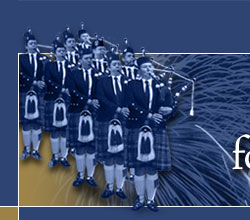 |
 |
 |
|||||||||||
|
|
|
|
|
|
|
|
|
|
|
|
|
|
|
|
||||||||||||||||||||||||||||
|
Did You Know? Did you know that in 1951 the population of Port Hawkesbury was 1034, Mulgrave was 1212, and Point Tupper was 394? Now do you know that in 2001, the population for Port Hawkesbury was 3701, Mulgrave was 904 and Point Tupper was 12? Do you know the names of the car ferries that crossed the Strait of Canso from Mulgrave to Port Hawkesbury (Point Tupper in winter)? They were the Edith C. Walker, Pointe de Canseau, Breton, Sir Charles Tupper, George H. Murray, and the John Cabot. All ferries listed were owned by The Department of Highways except the first that was owned by a local company and captained by P.J. Walker. There were also at least ten private ferries operating in the area from Port Hastings to Red Head. All rock for the Causeway was obtained from Cape Porcupine. Three separate quarry levels were established and the coyote tunnel method was used to obtain the rock. Do you know what rip rap is? It’s the name for a series of huge boulders placed on the sea side of a causeway and near enough to the surface to break and resist the pounding waves. Some people say when the Canso Causeway was first built, you could not see the water while driving in a car because the rip rap was so high. A fleet of Euclid trucks carried the 10,092,069 tons of rock from Cape Porcupine to build the Causeway. A newspaper article dated September 24, 1952 stated “Once the massive Causeway fill is in place, it will require little maintenance. Moreover, because of the solid nature of the fill, such sporadic bombing as might be possible to enemies based in Europe or nearer would be able to inflict little serious damage upon it.” These statements written during the Cold War seem to justify the building of a causeway rather than a bridge. The Causeway has inspired designs in fabric. Florence Mackley in 1955 designed a pattern to commemorate the opening of the Causeway that was woven into skirts. To celebrate the 25th anniversary, Diane Harris adapted the original weaving to design a pattern for sweaters. For Port Hawkesbury’s centennial, a group of quilters made a quilt that included a Canso Causeway block. This year for the 50th anniversary, a challenge is being issued across Canada for all quilters to create a Wall-Quilt using the theme “A Gathering”. In 1955, a slogan cancel was used at the post office in Sydney, NS. It read “Canso Causeway, Road to the Isle, Opening Ceremony August 13, 1955”. In July and August 1980, the Port Hastings post office used a circular cancel reading “Canso Causeway 1955-80 Port Hastings NS/NE”. In January 2003, a pictorial cancel that read “Port Hastings NS Gateway to Cape Breton” was used for the first time. On April 3, 2005 the launch for the Canso Causeway Bridge Stamp will take place at 2 pm at the NSCC Strait Area Campus. The swing bridge at the Canso Causeway was constructed by Maritime Steel & Foundries Limited of New Glasgow, NS. The 308 foot, 1520 ton swing bridge was one of the heaviest of its kind in Canada. After being riveted together on site, the completed bridge was moved into position spanning the Canal on April 11, 1955. The bridge swing takes about two minutes to complete on a centre bearing that is only 38 inches in diameter. Do you agree that the most symbolic part of the bridge is the “Welcome to Cape Breton” sign? Premier Angus Lewis Macdonald died on April 13, 1954. This man of vision who championed the cause for a permanent crossing for the Strait of Canso was born at Dunvegan, Inverness County on August 10, 1890. The World War One veteran, lawyer, professor, federal politician and NS premier did not live to see 100 pipers marching across the Causeway. August 12, 2005 is the Tribute to Angus L. Macdonald Day with events honoring Angus L in Dunvegan, Inverness, Port Hood, Port Hastings and Judique. Do you know that there is a cemetery on the hill by the lighthouse at the Canso Canal? This area contains six headstones for seven people. The oldest headstone is for Douce Elizabeth Belhache aged 6 years and 8 months who died on July 23, 1795. Early settlers buried there are James and Christena Skinner, Angus and Jane Grant, Charles Fox and his daughter Mary. She died in 1880 and was the last person buried on the piece of land beside the Causeway known both as Belhache Point and MacMillan’s Point. The Causeway has been the subject of songs and tunes for the past 50 years. Two very different Causeway Songs were written by Charlotte Rankin MacInnis of Creignish (1955) and by Robbie O’Neil et al for The Mulgrave Road Show in 1977. This year students can submit a song, poem, essay or artwork for the Causeway Literary Arts competition. Adults will have their chance to compose a song for the Causeway Song Contest. Watch for details.
|
||||
 |
|
Home | The Event | About The Causeway | Causeway Memories | Legacy | 50th Anniversary Society
© Canso Causeway 50th Anniversary Society
|